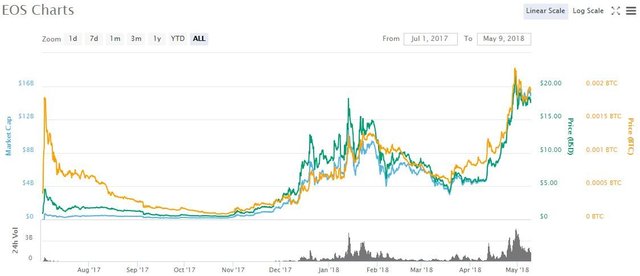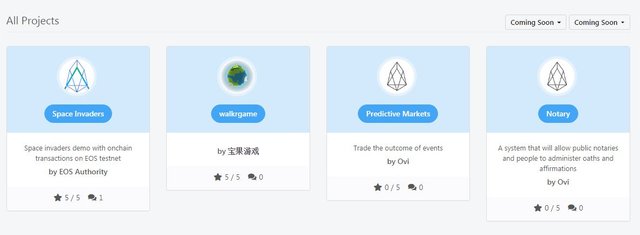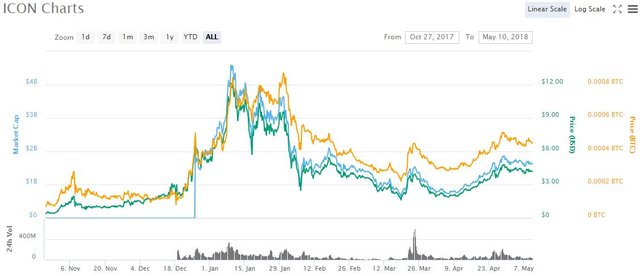EOS: WTF? / ICON - Hyperconnect the World - Coin Presentation
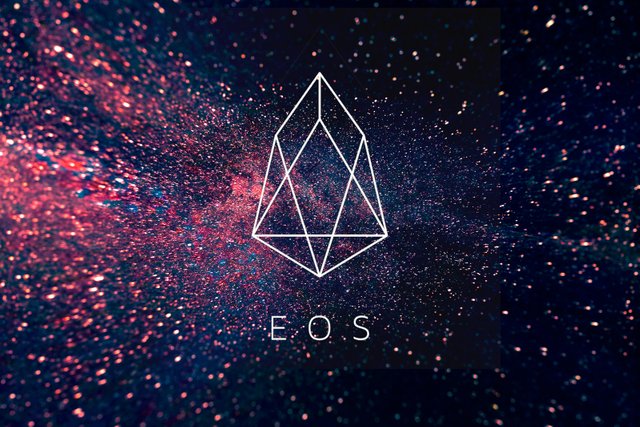
Never has a blockchain been worth so much before it even existed. The masterpiece of Blockchain architect Dan Larimer promises to solve all the problems that other cryptocurrencies suffer. So far, however, it is above all making its founders even richer. However, EOS will show what it can do in early June.
For many cryptocurrencies, prices are currently jumping up. But not as strong as EOS. Since mid-March alone, the value of the 840 million EOS tokens more than tripled, rising from around $ 5 to over $ 19. This puts EOS in fourth place in the ranking of cryptocurrencies by market capitalization. This is even more surprising when you realize that the tokens were traded at the beginning of November 2017 at around 50 cents.
That's what you can call Performance: the course of EOS.
Anyone who has invested in time has multiplied their efforts thirty-fold - and that while EOS does not yet exist. So far, the currency exists only as an ERC20 token on Ethereum. What the …? How does EOS come to be this year's most hyped blockchain project?
Before we get to the technology, we stay with the people behind EOS for a moment. Because these are at least as interesting. The budding blockchain has behind it some of the most prominent and richest players in the eco-system. On the one hand there is Dan Larimer, who as the inventor of BitShares and Steem has already proven that he can form highly scalable blockchains. He is supported by Brendan Blumer and Brock Pierce of the investment company Block.one. All three have a place in the Forbes list of the rich in the crypto world.
There seems to be an expectation that Dan Larimer will do something great with his third try. But what exactly does EOS want to achieve? The "Epic Operation System" is intended to become a decentralized operating system for Dapps (decentralized applications). According to the usual statements, whether on Reddit or Steemit, EOS will have accounts and databases, make it possible to identify the users, and be able to scale to millions of transactions per second thanks to various methods. EOS is to become the platform for smart contracts and distributed computing, as well as the blockchain for all financial transactions. The claim is to make all other cryptocurrencies redundant, making EOS the most successful ICO of all time.
EOS is to become the Google of blockchains!
The Technology
Like BitShares and Steem, EOS uses the "Delegated Proof of Stake" (DPOS) developed by Larimer and already used by Lisk. This is, according to the EOS technical white paper, "the only known decentralized consensus algorithm that has been proven capable of meeting the performance requirements of blockchain applications." In fact, BitShares and Steemit succeeded in using this technique Process thousands of transactions per second without the latency of the network firing through the ceiling. At least in test environments. But even in everyday life Steem is able to cope with many transactions (about 1.5 million a day)
In short, DPOS works in such a way that the "community" selects a certain number of block producers - at EOS, there are 21 in number, which then verify transactions and blocks and update the blockchain. In this election, each user gets one vote in relation to the number of tokens he holds. It might be a little bit like the US election concept, except that there is a continuous choice where users can fire a block producer at any time if they are wrong. Of course, block producers are rewarded with EOS tokens for their work. They also ensure that EOS has a kind of "government" that, for example, makes decisions about how the software will be developed further.
As the white paper explains, EOS will have an account system that is more reminiscent of websites than blockchains: the users are identified by a name or a pseudo-symbol. Each account holder can determine in different gradations, which rights are assigned, if other users interact with him. This allows different roles to be assigned to EOS ecosystem actors, depending on their role in a smart structured relationship. Also, it will be possible to recover funds if private keys have been stolen, or to freeze accounts when they are carrying out some criminal activity. Both are done by a majority decision of the block producers.
A multitude of scripts and a virtual machine ensure that virtually every imaginable Smart Contract can be executed on EOS. This puts the project in direct competition with Ethereum - even while it exists exclusively as a token on the Ethereum Blockchain.
In order to get thousands, or even millions of transactions (as the presentation of EOS), the project relies on several concepts. On the one hand, it is assumed that the 21 block producers have enough hardware to handle the data load. Furthermore, data processing at EOS will be massively parallelized. Most importantly, EOS should build a universe of sidechains that can be used with the same token.
The Governable Blockchain
EOS plans to form a governable blockhain. A cryptocurrency that is managed aristocratically, with the 21 block producers having extensive rights to intervene in the financial and other interactions. The immutability that we know from Bitcoin and also from Ethereum - at least changes in Ethereum are now extremely difficult - is just as little sought by EOS as the freedom of permission that gives each Bitcoin or Ethereum address the same rights.
EOS is, in other words, an attempt to make a blockchain palatable to the governments of the world. EOS offers some of the benefits of blockchains - transparency, decentralization, openness - without taking on the loss of control many governments fear about blockchains. Personally, I find that relatively boring because EOS is simply giving up two of the most exciting aspects of blockchains - the freedom of permission and immutability - and reinstating what a cryptocurrency should not have: a government.
But for many others, EOS seems to be doing well. Bitfinex, for example, has already agreed to form a decentralized exchange based on EOS (EOSFINEX), and Bitmain, a major manufacturer of Bitcoin mining hardware, is already applying for a job as a block producer. In addition, there are numerous other projects that intend to use the EOS blockchain.
Click on the image below to see all the EOS projects:
However, this blockchain is not yet officially available, even if it already exists as a test network. At the beginning of June, however, EOS will officially go live. Then you will see if the project will meet the high expectations.
Inspiration for ICON
ICON was inspired by Gilles Deleuze and Felix Guattari's rhizomes - "The world without center and the world in which each point is just a connection to other points." ICON is a link for different cryptocurrencies with different blockchain governance models and connects the crypto world with ours real world.
ICON, a project of the Swiss ICON Foundation, is also concerned with interoperability between different blockchain systems, as an essential requirement for cross-ledger, user-friendly, secure and frictionless flow of information and value. ICON's vision is to redefine the importance of local communities, thus paving the way for a period of decentralization.
What is ICON?
The 43-page ICON white paper is available in both English and Korean, giving us insight into ICON's vision, architecture, components, and features.
On Github, ICON has recently provided 6 repositories, including the "loopchain core engine open source edition" as a fork of loopchain, a Seoul-based blockchain project "theloop".
ICON is made up of a network of different blockchain-based and independent communities that are connected via a "C-Rep" portal, forming a larger community, the ICON Republic. ICON Nexus is the blockchain for ICON Republic, and enables transactions between Nexus-affiliated communities. A nexus can be connected to other Nexus-equivalent blockchain networks, providing a variety of options for extending and scaling blockchain systems.
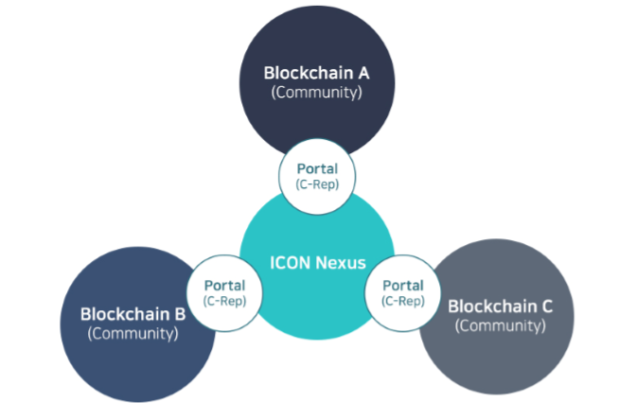
The Nexus Blockchain is based on loopchain, a high-performance enterprise blockchain with smart contract features that can be configured to meet operational needs and connect to other distributed ledger networks.
Nexus enables distributed governance by including portals and various nodes, and enables transactions between independent portals and Nexus-based blockchains based on Blockchain Transmission Protocol (BTP). Nexus uses loopchains LFT consensus algorithm. Representation Channels can be used to propose and coordinate proposals for operational guidelines. Each portal participates in the Representation Channel through C-Rep, the representative of the municipality.
Embedded in Nexus are ICX tokens, which can be used by the interconnected blockchains for value transfer. New tokens will be issued within a cycle of about 15 million blocks or within one year. The annual output of new tokens is determined by ICON based on various factors, with a maximum of 20% allowed. Adjustments to output new ICX are made via the C-Reps and the Representation Channel. The transaction fee is currently 0.01 ICX.
Another architectural component of ICON is DEX (Decentralized Exchange) for the realization of transactions in different crypto currencies within the ICON network. ICON was inspired by Bancor to determine exchange rates.
ICON DEX comes with an interesting feature: An analysis model that can help to stabilize cryptocurrencies through price, exchange rate, transaction volume, and artificial intelligence data. ICON builds on its experience with DAVinCI LABS for predicting loss rates in insurance, credit risk or exchange rates.
With the help of the ION (ICON Incentives Scoring System), an AI-based rating system, ICON can optimize the bonus structure to vitalize the ICON Republic.
Nexus Public Channel - a feature based on loopchain's multi-channel feature - allows any user to perform ICX transactions, as well as build and use various distributed applications (DAPPs). Unlike Ethereum, where the code is contained in the transaction data and executed in a virtual machine, ICON DAPPs are provided in a store and must be installed before use.

SCORE (Smart Contract On Reliable Environment) is an advanced smart contract feature from loopchain. With SCORE, high-performance smart contract code can be executed directly in the operating environment of the nodes, without a separate virtual machine.
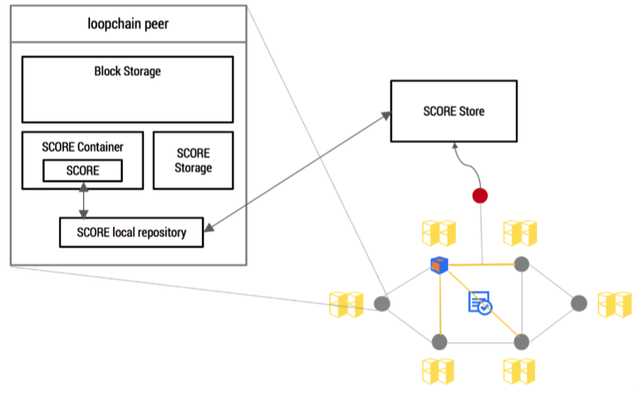
ICON provides its own wallet ICONex for ICX and various other cryptocurrencies. Currently available as Chrome Extention, the Android and iOS applications are announced.
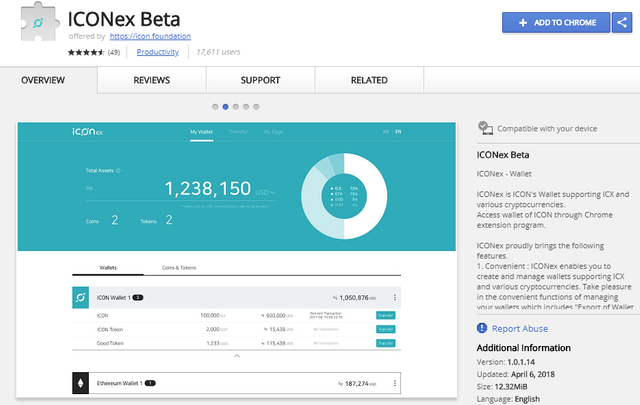
ICX - The ICON cryptocurrency.
ICON has its own token tradable under the symbol ICX at various exchanges against BTC, ETH, Tether (USDT), Binance Coin (BNB), LATOKEN (LA), Indian Rupees (INR) and South Korean Won (KRW), where Binance handles most of the transactions. The ICX price is currently around $4.23 USD, with market capitalization currently at around $1,639,115,447 USD, which puts it in 21st place.
The ICON token ICX came on the market after a successful ICO in September 2017. In total there are about 400 million ICX token, with around 387 million in circulation.
Investing in ICX may be worthwhile, but a comprehensive analysis of competition such as Cosmos, Polkadot, HCash should not be abandoned.
ICON team and partners
The ICON team consists of 8 advisors, including Don Tapscott, 6 Foundation Councils, 30 Blockchain professionals, and 8 AI and 8 design, security and communications experts.
The list of ICON partners includes Venture Capital, Global Accelorators and crypto-focused legal experts such as Pantera Capital, Kenetic Capital or Crypto Bazar, as well as blockchain media platforms such as Forbes, Bloomberg and CoinDesk.
ICON co-founded the Blockchain Interoperability Alliance with Aion and Wanchain in December 2017. Wanchain is working on a new distributed financial infrastructure, Aion focuses on scalability and interoperability in blockchain networks. The Alliance works and researches together for a common goal: the development of inter-operational standards for interchain networks and protocol architectures.
Perspective
ICON presents various interesting loopchain projects on its website, such as for securities, banks, insurance companies, universities or the healthcare sector.
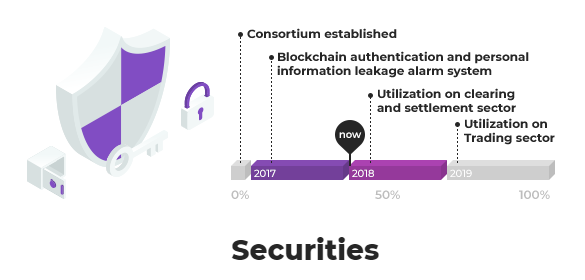
Twenty-six Korean securities companies jointly formed the Korea Financial Investment Blockchain Consortium in 2016, the largest blockchain organization for a single industry. The market launch of the world's first blockchain service 'CHAIN ID' followed at the end of 2017. The applications for clearing and settlement are planned for 2018.
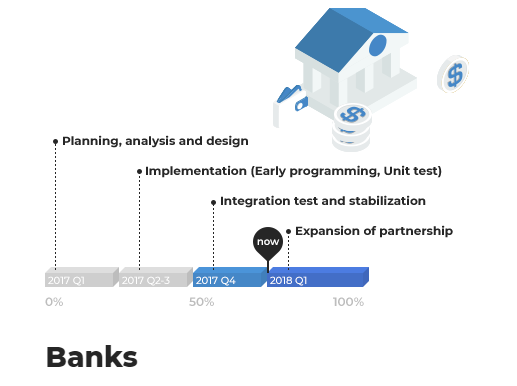
The bank commune of the ICON network is developing a digital pre-paid payment system with features such as Digital Account Management, Recharging, Transfers, Withdrawals and Digital Currency Management.
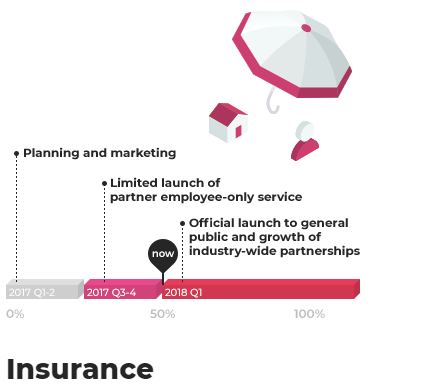
A consortium of insurance companies launched an automatic receivables service based on loopchain. This allows customers to claim their claims easily.
All in all, ICON seems to be very well positioned in the market. It will be exciting to see how ICON will succeed in consistently implementing its ideas and visions. Strong partners and the Blockchain Interoperability Alliance could actually set new standards for a "hyperconnected world".
Video Source:
youtube.com/Wanchain Foundation Official
Image Sources:
Image Sources:
Article headers created by myself
https://blocktivity.info/
https://eosindex.io/posts?page=1
https://icon.foundation
https://coinmarketcap.com/currencies/icon

Have a nice day!
